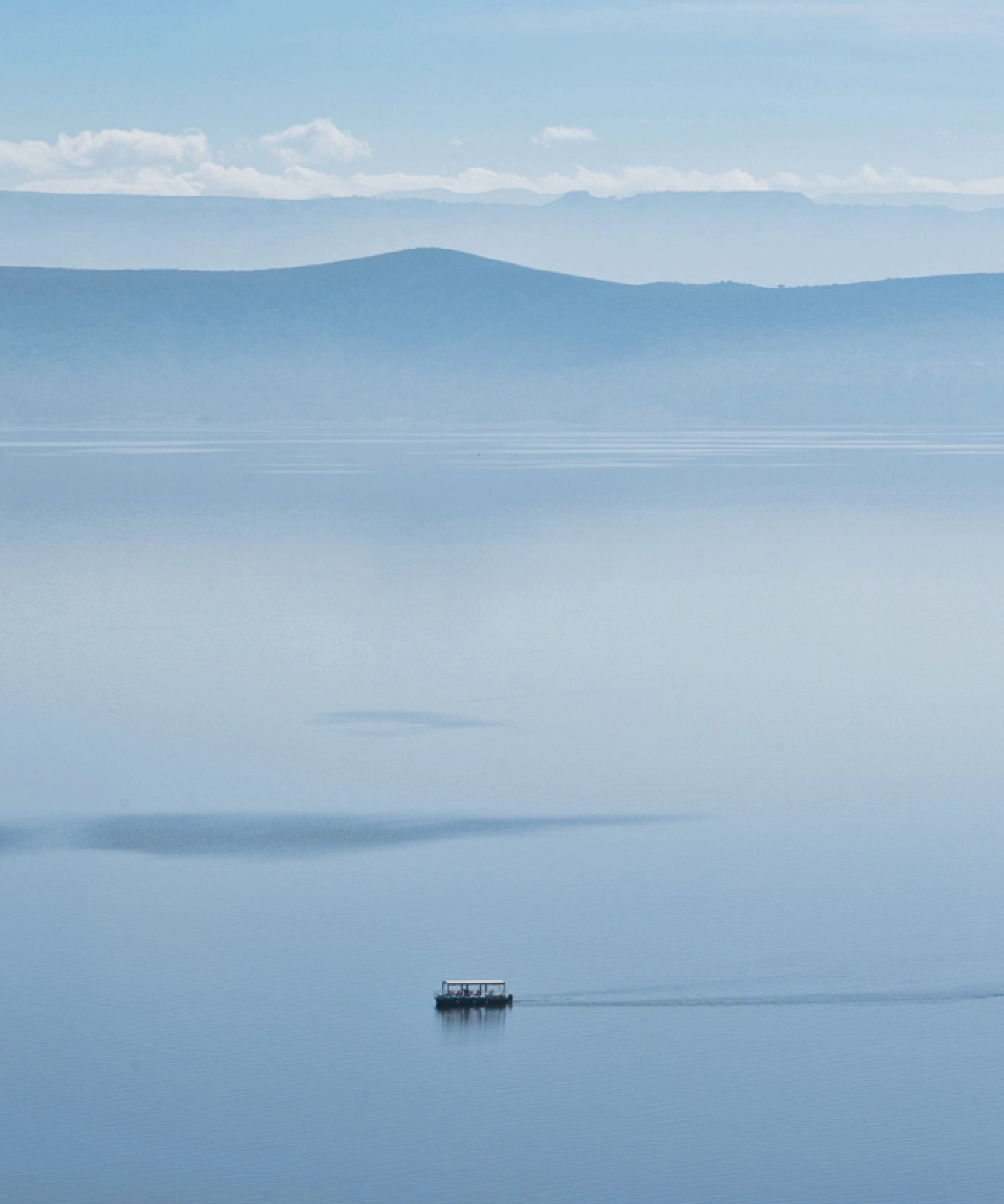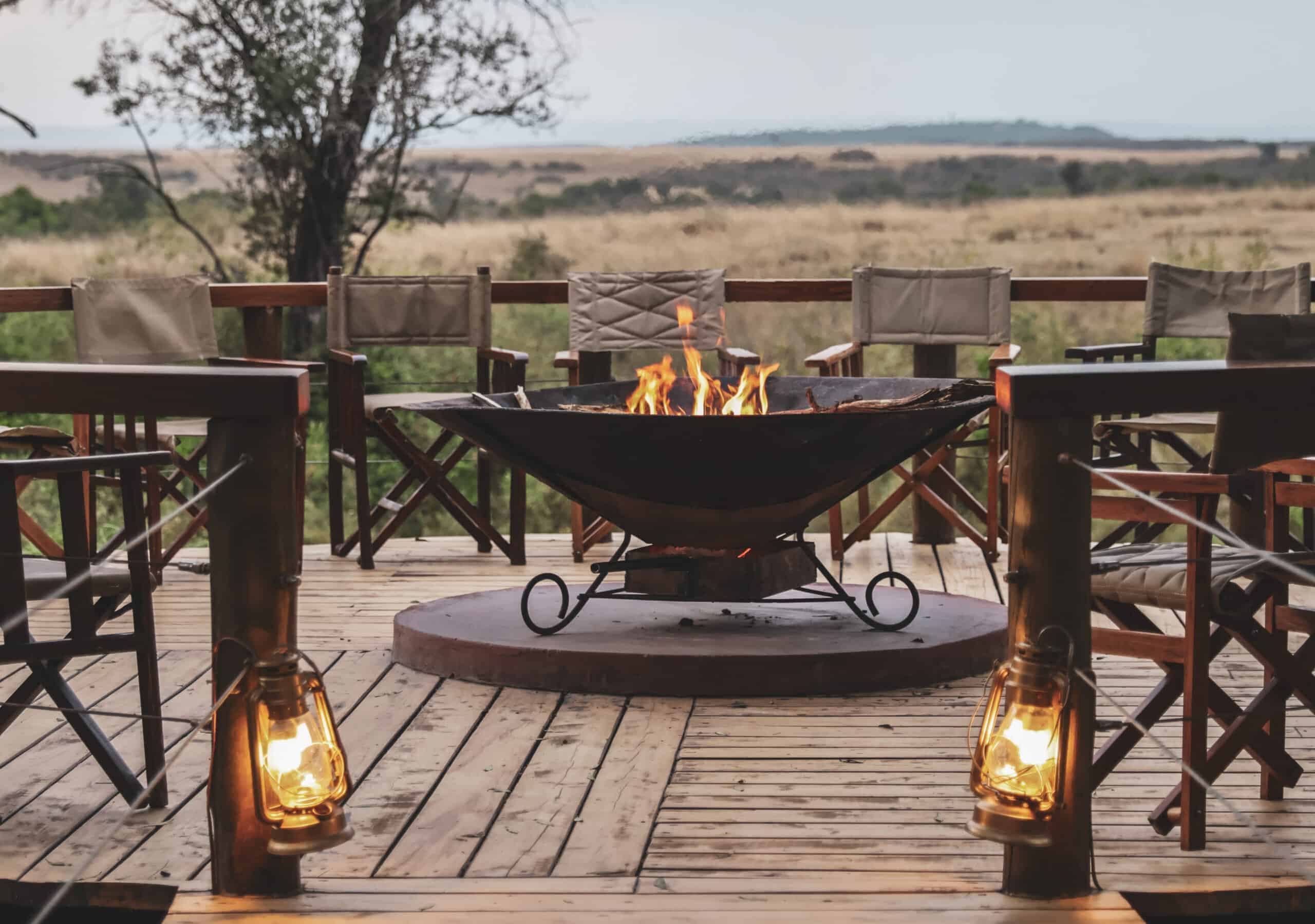Discover Kenya’s Seasons
Kenya’s pull is visceral. Beyond the Great Migration, a Kenyan safari in the dry season promises dramatic rolling scenery, thrilling wildlife viewing, and Wilder discoveries. Kenya’s wildlife is abundant, and while two distinct seasons boast year-round beauty, there’s something infinitely intriguing about experiencing the dry season on the plains.
The Great Migration in Kenya: Dry & Wet Seasons
The Earth rumbles under the hooves of a million wildebeest, thundering north. Each year, the lush, fertile grazing on the plains of the Maasai Mara lures two million mammals on a treacherous journey across East Africa. And their journey isn’t over yet.
When the dry season in Kenya begins (June), there's nowhere on Earth we’d rather be. The days are warm and clear, and a stretching savannah peppered with trees beckons. Known to be the best time of year for wildlife viewing, the dry season promises cool mornings and evenings. With the absence of rain, the flora becomes less dense, making observing Africa’s treasured animals easier. This region is famous for its predator sightings and enamoured elephants, known affectionately as “tuskers,” large bowing tusks seem to sweep the ground.

Known widely to be the best time for a safari in Kenya, the Maasai Mara hosts the Earth's most spectacular wildlife show. Each year from July to October, one million wildebeest and close to one million eland, Thompson's gazelles and zebras follow an ancient migratory route in a clockwise formation, leaving the Serengeti in Tanzania and passing freely through the Maasai Mara. Hailed the Great Migration, wildlife enthusiasts descend from around the globe to catch a glimpse of the drama. Some wait apprehensively on the banks of the Mara River, while a haphazard trail of beasts cross crocodile-infested water with their infants in tow. Some wait on stretching plains under expedition-style tents with their cameras perched waiting for clouds of dust to appear over the horizon. While others watch on from a distant corner of the globe, yearning to experience the rush firsthand. Better yet, if you’re staying with us in the Maasai Mara, you can float above the plains and see the migration from a new perspective. A hot air balloon ride reveals free-roaming animals in their thousands, evolving savannah landscapes and enchanting vistas from above. Here, across the vast blonde grasslands, the promise of rain hangs in the air, dangling a proverbial carrot in front of the African wildebeest on land that's parched from the sun.

By November, the great herds begin their journey south in anticipation of the returning rains. Perhaps it's an ancient instinct that sets their migration into motion, no one knows for sure, but what follows is a dramatic display of nature as you've never seen it.
Discovering Kenya’s Wild Interior
While this mighty migration happens throughout the year across Tanzania and Kenya, it’s the dry season that entices travellers to explore vibrant ecosystems in Kenya’s wild heart – some infamous, like the great Maasai Mara, and some burgeoning.

In central Kenya, Lake Nakuru National Park attracts visitors to the floor of the Rift Valley. On the banks of the glistening soda lake, sprays of pink flamingos can be seen from rocky vantage points or the towering escarpment above. This 188-square-kilometre UNESCO World Heritage Site protects 400 species of birds and endangered wildlife, including black and white rhinos and the Rothschild’s giraffe. It’s here in Lake Nakuru National Park that you’ll find The Cliff Camp, gently presiding over the water. Remarkably, not a single tree was felled to construct the ten-suite camp, a testament to the respect we share for the surrounding land and its living creatures. For a holistic experience, our guests can join The Cliff Boat Safari for a photographic voyage across the lake. In the sanctuary of the Important Bird Area and Endemic Bird Area, you’re bound to discover rich birdlife and water-dwelling mammals.

Ol Pejeta Wildlife Conservancy lies just beneath the dramatic snow-capped summit of Mount Kenya. It’s here in the embrace of nature that the world’s last northern white rhinos exist, among a flourish of other species like black rhinos, lions, leopards, elephants, and antelope. In the conservancy’s southern reaches, The River Camp sits beside the Ngobit River in an area known for its lush vegetation and vibrant riverbanks. In this exclusive location, safari activities are diverse.

Along with daily game drives, guests can set off on horseback rides in the open plains, track lions with researchers, and take a guided bush walk or mountain bike. But perhaps the most spellbinding of all is the opportunity to see the two last remaining white rhinos in the wild with an educational expedition geared towards both adults and children. The River Camp hosts just 20 guests at a time with secluded tents that feature private decks and outdoor showers, all facing the view beyond.
Live on the Wilder Side and Uncover Kenya
There’s a reason winter is considered the best time for a safari. Over the coming dry months, the vegetation across our wilderness begins to thin out, revealing spectacular wildlife viewing opportunities, on land, foot and from the sky. At this time of year, animals search for water, congregating at its source seeking reprieve. For visitors this means dramatic wildlife scenes and thrilling moments observing large herds of animals and even predators up close.

When winter eventually dwindles and the warmth of summer returns, along with the rain, these lands will be transformed again. When the wet season finally arrives in the Maasai Mara, first in short intermittent bouts in November, then gathering strength in April and May, dramatic textures fill the vast sky in the late afternoon each day. And then it's over. In its wake, the Earth is quenched, and everything thrives. Life on the plains and the Great Migration begin again.
We celebrate this time of renewal as we welcome you to uncover the beauty of Kenya in each season at our intimate camps scattered throughout the Maasai Mara, Ol Pejeta Conservancy and Lake Nakuru. Dare to explore diverse landscapes, and discover the wonder of wild Kenya for yourself.











